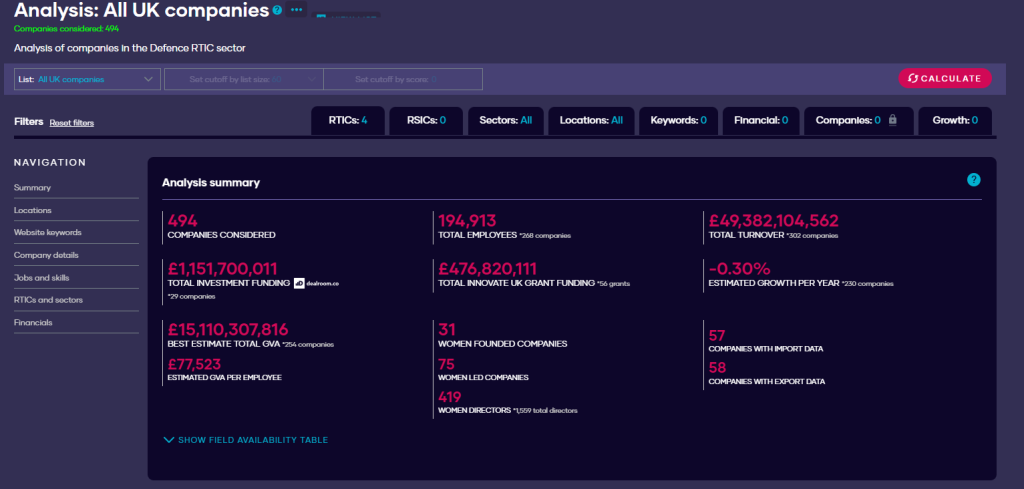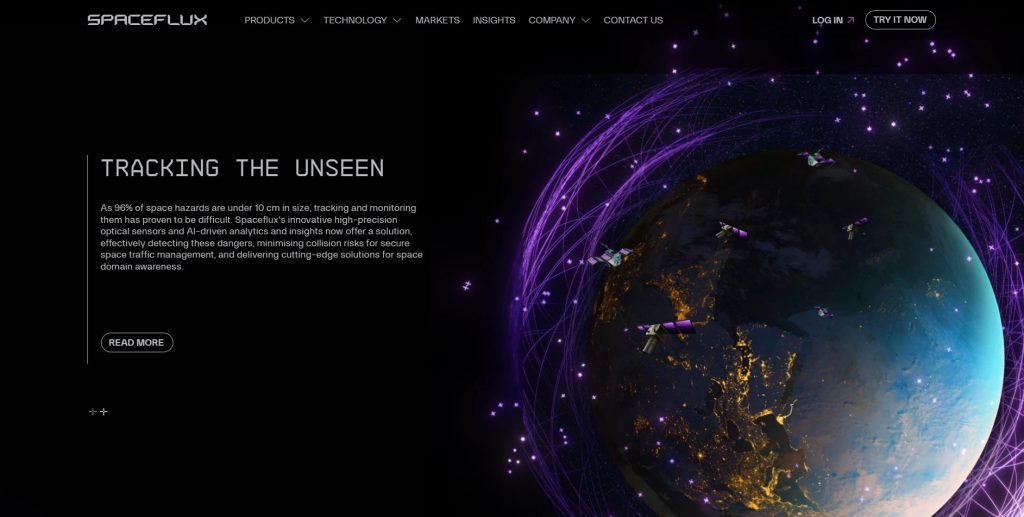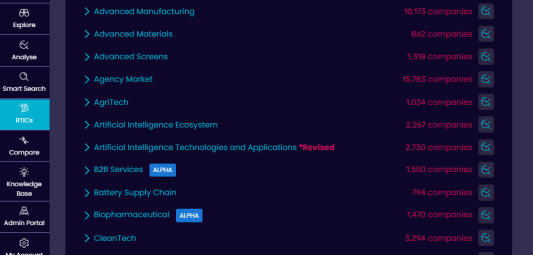Introducing our new Defence RTIC, developed using Ministry of Defence’s technology framework.
At The Data City, we’ve always been at the forefront of identifying and mapping the UK’s emerging economies. With over 400 Real-Time Industrial Classifications (RTICs), built using AI and expert insights, our platform helps users understand cutting-edge technologies.
We’re excited to share that we have released the first version of the Industrial Strategy Sector Mapping Guide which provides a comprehensive framework for defining and measuring key high-value sectors using our RTIC-driven approach. As part of this initiative, we have mapped the Defence sector, which is a crucial industry for national security.
Why does mapping the defence sector matter?
The reason why we’ve created this RTIC is because SIC codes have often struggled to accurately map the UK defence sector due to their broad classifications, outdated structure, and inability to track emerging technologies or cross-sector industries.
Many defence-related businesses, especially SMEs and those in cybersecurity or AI, are misclassified or overlooked. The Data City’s Defence RTIC is more dynamic and captures the sector’s complexity for accurate insights.
Mapping this sector is particularly challenging due to the complex and fragmented supply chains, secrecy around contracts, and the presence of dual-use technologies that serve both civilian and military markets.
Many defence-related firms do not publicly disclose their involvement due to national security concerns or commercial confidentiality. Additionally, data is siloed across various government and industry bodies, with no centralised, publicly accessible dataset.
The defence sector is also highly export-driven, meaning much of its economic activity is recorded under global trade rather than domestic industry reports.
A significant challenge is the reliance on Standard Industrial Classification (SIC) codes, which fail to accurately categorise defence-related businesses. Many firms are grouped under aerospace, engineering, or cybersecurity, obscuring the sector’s true size and impact.
What does the sector include
This is the first iteration of the Defence RTIC, developed using the Ministry of Defence’s Technology Framework.
To establish a foundation, the Data City has mapped the following 4 verticals for the defence RTIC
- Comprehensive Intelligence, Surveillance and Reconnaissance
- Modernised Logistics and Support
- Platforms
- Space and Resilient Communications

Defence RTIC insights
The RTIC comprises 494 companies with just under 195,000 employees. It houses some big players such as Airbus, Babcock and Bae systems. The total turnover for this sector is £49.3 billion and it has received over £1.1 billion in investment funding.
We’ve highlighted some of the smaller, lesser-known companies in this space, which include:
Space Flux a London based company that helps governments and defence organisations track objects in space. They use a global network of optical sensors and AI to provide accurate space monitoring and protection.
They received seed funding in June 2024

RED Scientific ltd provides services like operational analysis, software development, and engineering support, working with organisations such as the Ministry of Defence.
In the last 3 years they have received Innovate UK funding and have an estimated growth percentage per year of 5.3%.

The Data City is committed to being the definitive resource for understanding emerging sectors. With over 400 RTICs already available, our platform offers real-time insights into the most dynamic areas of the UK economy.
This Defence RTIC is just the beginning. As we continue to refine and expand this classification, we invite experts, organisations, and users to collaborate with us.
The Defence RTIC is now live in our platform and available to all the Data City users.
Want to find out more about our Defence RTIC and see the data in action? Sign up for a free trial today.


